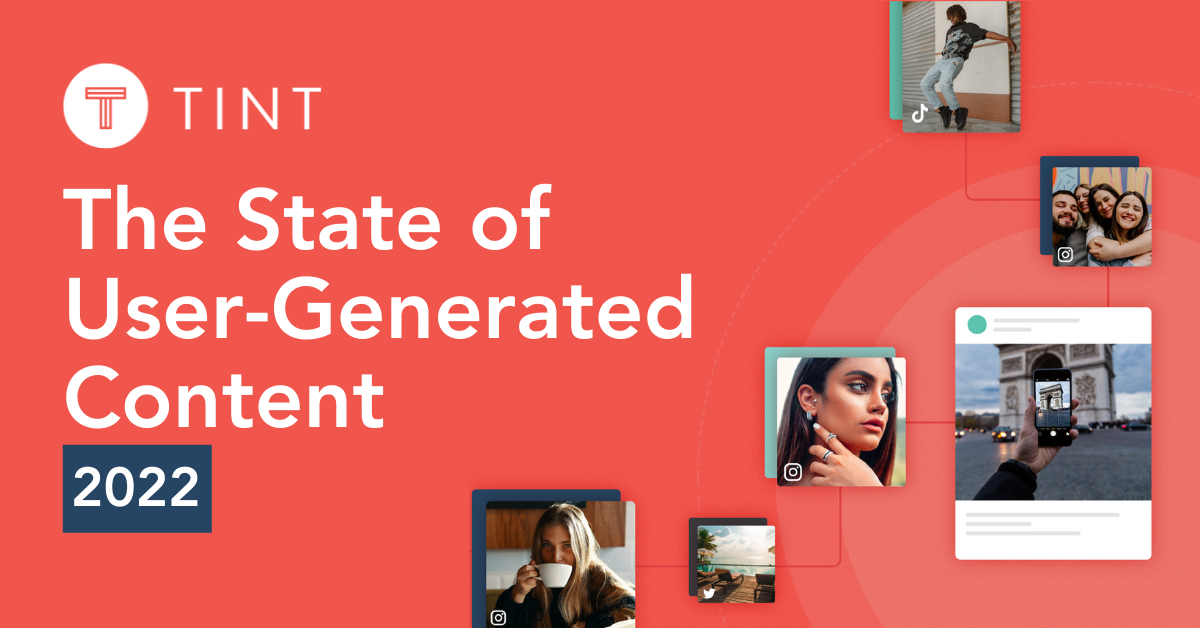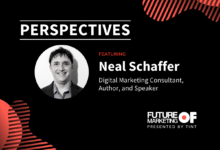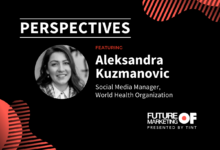2021 was a ride for marketers. We thought nothing could be more challenging than 2020, and 2021 had a realllll good laugh. It turns out that 2021 would come with its own fair share of challenges – from consumer sentiment to a lack of resources and support.
Marketing in 2021 was chaotic and challenging – but what does that mean for 2022?
Every year, we look at the state of user-generated content and the future of marketing in our annual State of User-Generated Content (UGC) report. Our goal is figuring out what to expect in the new year, where user-generated content fits in, and what marketers need to know to succeed.
To make sure we’re spot on with our predictions, we cross-reference marketing themes with consumer trends and expectations. This year, that led us to find 7 marketing themes that every marketer should be aware of. We discovered the top 2 KPIs marketers are focused on, the #1 challenge marketers are facing, and what consumers expect of brands from the metaverse.
Outlined below are each of these 7 themes and exactly how marketers and leaders can take action on them.
– – -Get the full State of User-Generated Content 2022 report here – – –
7 Marketing Themes of 2022
Theme #1: Engagement vs ROI
- In 2020, engagement was the 7th biggest obstacle for marketers. In 2021, it became the top challenge and in 2022—nothing has changed. Marketers are vying for attention on their content, despite new platforms, like TikTok, promising more engagement.
- Yet, depending on the team there’s only one other challenge that could reach that coveted top spot: return on investment. Attributing content through ad platforms has continued to be a struggle as marketers see Google and Facebook take credit for the same sale. Is engagement your North Star—or is a return on investment the priority?
The Statistics:
- 16.40% of marketers need to increase followers/subscribers to reach their goals
- 14.80% of marketers have lead generation as most important in their role
- 5.60% of marketers have something other than engagement, ROI, followers/subscribers, or leads as their main KPI
Take Action: Return on investment is imperative to having the budget to create engagement. Marketing leaders need their team aligned with their goals, transparently sharing what it takes to see an ROI from campaigns and long-term social strategies. Then, use engagement to measure the success of campaigns and social content—and optimize as needed.
Theme #2: Team Growing Pains
- In 2020, marketers needed help. One of the main challenges was team size. Their teams weren’t large enough to support all the content, campaigns, and strategies they had to ship. We’re happy to see 48.20% of marketers increasing their teams in 2021—but what about the other 51.80% still struggling to keep up?
- Youri Hollier, Director of Digital + Social for Tim Hortons sees marketers struggling most with the quantity of work, “The hardest thing is knowing what to prioritize. We’ve been able to navigate that pretty well, but it’s a never-ending struggle with constantly evolving platforms.”
The Statistics:
- 47% of marketers agree that it takes their team too long to create content.
- 60% of marketers feel pressured to continually produce greater amounts of content at a high frequency.
- 60% of marketers take the time to format content for all screen sizes and social media platforms.
Take Action: Content platforms are hungry and it’s not realistic to think marketing teams can keep up with demands across marketing channels. That’s why brands turn to user-generated content. UGC takes some content production off marketer’s task lists and has a 4x higher engagement rate in comparison to brand-created content.
Theme #3: The Untapped Potential of User-Generated Content
- User-generated content fills content calendars. It also creates engagement and conversions at a higher rate than brand-created content. UGC helps marketers with small teams create more content across multiple channels, while fulfilling their goals of more engagement and a return on investment. Seventy percent of marketers report ratings and reviews important to their company and 61% plan to incorporate more user-generated content into their marketing in 2022.
- Back in 2020, we reported how much more consumer sentiment was placed on user-generated content than brand-created content, and in two years sentiment has only grown larger.
The Statistics:
- 72% of consumers believe that reviews and testimonials submitted by customers are more credible than the brand talking about their products.
- 76% of consumers have purchased a product because of someone else’s recommendation before.
- 91% of consumers agree that when brands they like and use re-shares content by customers, they are more likely to share content about the brand or its products.
Take Action: Ask for reviews, testimonials, and product/service content from your customers (they want you to ask!). Amp up your UGC efforts through contests and giveaways that utilize UGC and hashtags to share your brand, message, and products.
Theme #4: Employee-Generated Content is Key for Recruiting and Employee Engagement
- In this past year, 1 in 4 people quit their jobs, including a majority of mid-career employees. Hiring in 2021 isn’t what it was even a year prior. The available talent is arguably something companies have never experienced before—and there are plenty of teams taking advantage.
- More than half of communications + HR teams (52%) regularly use employee-generated content (EGC) across communications channels. EGC shows interested candidates what it’s like to work at the company and employee sentiment. Like UGC places your customers as brand ambassadors, EGC turns employees into company advocates.
The Statistics:
- Employee advocacy programs with at least 1,000 active participants can generate $1.9 million in advertising value.
- New job applicants consider current employees to be the most trustworthy when considering a potential employer.
- 58.8% of employees in formal employee advocacy programs spend greater than 5 hours per week on social media for business use.
Take Action: With a rise in employee turnover in 2021, EGC offers a way to improve recruiting efforts and increase satisfaction and engagement with current employees. Initial hesitancy to create UGC is normal, which is why leadership buy-in is so important.
Theme #5: Effectively embracing DEI
- Consumers want brands to reflect diversity, equity, and inclusion. The majority of marketers (71%) plan to embrace DEI and are navigating the right and wrong strategies around it. Millennials and Generation Z are masters of spotting fake-authentic content from a scroll away—and they’re not afraid to call brands out on it.
- They’re looking for brands to align with their values and to showcase those values in their marketing. Marketers are listening, looking for more aligned voices to share their brand message and products through user-generated content and influencer marketing. With the right influencer partnership, brands can find the ideal voice to share what they stand for, who they stand with, and why they care.
The Statistics:
- 71% of marketers plan on showing more diversity, inclusivity, and accessibility in their content in the future.
- 6 in 10 marketers feel that their organization could do a better job at highlighting participation in social issues
- 63% of marketers plan to blend more community voice with their brand voice in 2022
Take Action: Encourage conversations online and facilitate customer and employee engagement with your brand, work with creator communities who are passionate about sharing online and align with your company mission, and connect with influencers who reflect brand values.
Theme #6: The Power of Visual Content
- Video has been on the rise for the past few years. With Instagram officially calling itself a video platform (over a photo platform), it’s clear where things are headed. Visual content is powerful and advertising platforms looking at the data aren’t afraid to admit it. In 2022, we predict a rise in visual content around travel experiences, events, retail and new products, and lifestyle brands.
- This will be, in part, thanks to the continued rise of user-generated content. With cameras in our pockets, we can easily share our experiences with our online audience (whether we’re nano or macro-influencers). Activations and experiences will create engagement from audiences, attendees, and customers excited to share what they’re doing with their online network.
The Statistics:
- 71% of marketers plan on increasing efforts in video content in 2022.
- 63% of consumers believe that visual testimonials are more credible than written testimonials.
- 62% of consumers report that they are more likely to click on content like ads, websites, social posts, or emails, that feature customer photos rather than an image created by the brand.
Take Action: People are creating more user-generated content than ever before and that number is seemingly increasing (especially if Meta has anything to say about it). Consumers want to see real people using products and having experiences, over stock or brand-created images. This is marketing’s opportunity to integrate more UGC and tap into the power of visual content.
Theme #7: The Metaverse is Shifting Marketing Thinking
- Mark Zuckerberg made a bold shift in 2021 when he shifted his company’s focus from online social platforms to online worlds. Facebook’s shift to Meta is Mark’s transparent prediction (and creation) of the future. The rise of cryptocurrency and NFTs supports these digital worlds and experiences—and that’s not something marketers should be ignoring.
- The metaverse is sparking new ideas in marketers’ minds—especially about the long-term consumption of their content. Would their customers want to hang out in their virtual store? Buy their virtual clothes? How does an integration into the metaverse fit into their long-term plan?
The Statistics:
- The number of virtual reality (VR) and augmented reality (AR) users in the United States is forecasted to reach 110 million users by 2023
- 22% of the U.S. and 15% of the U.K. Internet users think brands should advertise in the metaverse
- 19% of the U.S. and 13% of the U.K. Internet users think brands should build more branded experiences in the metaverse
Take Action: What does your product look like in the metaverse? While consumer sentiment doesn’t have a majority interest in virtual worlds, brands pioneering the shift to virtual (like Nike and Gucci) are worth paying attention to. Even if you don’t launch your first NFT in 2022, understanding how your brand could pivot to the metaverse is an important discussion to have.
Bite-Sized Predictions for the Future of Marketing
Once the metaverse is involved, you know the future of marketing will be quite the ride. Luckily, we’re used to adapting. It’s one of the most important characteristics of a great marketer: the ability to adapt to new trends, platforms, and…ways of living.
Here are our predictions for the future of marketing based on the trends in our annual 2022 State of User-Generated Content Report.
#1: We’ll see more strategic and thoughtful campaigns focused directly on engagement and ROI.
#2: To maximize budget, marketers will double-down on user-generated content in their omnichannel distribution, community building strategy, and referral programs.
#3: More brands will incorporate product images and videos from customers across their marketing channels in place of stock photos and brand-created content.
#4: More companies will encourage employees to build personal brands, so they can position themselves and the company as thought leaders and recruit top talent.
#5: Diversity, equity, and inclusivity (DEI) will continue to rise as an important topic and will extend beyond race, gender, and skin color. It will require brands to offer more accessible solutions like closed captions, alt text, and more.
#6: There will be more high-quality video content from brands and creators! Photos are great, but video evokes more personality and makes it easier to connect with audiences.
#7: Thanks to the metaverse, omnichannel marketing will get a lot more complicated. Marketing responsibilities will rise, new roles will emerge, and mental health will be a HOT topic (more than it currently is).
– – – Get the full State of User-Generated Content 2022 report here – – –
Welcome to Marketing in 2022
Omnichannel marketing has an entirely new ring to it once the metaverse is involved. With new platforms seemingly springing up every year (first TikTok, and now meta-worlds?!), marketers have a lot on their plate.
This doesn’t coincide well with their already lackluster budgets and teams running on fumes. That’s why companies republish user-generated content. UGC is a marketer’s ultimate sidekick, creating higher engaging and converting content than brand-created content.
And once you’ve set up the system to find, collect, and redistribute it—your marketing team gets to breathe a sigh of relief as their omnichannel presence thrives in engagement and ROI.
Stay on top of the next biggest trend by subscribing to the Future of Marketing (alongside 25,000+ other marketers). Subscribe to the Future of Marketing here.





